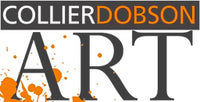October 31st is notoriously known in many countries as a day where you dress in a cute or macabre outfit in exchange for confectionery with the opportunity to spook your neighbours, and carving pumpkins whilst watching your favourite seasonal film! Halloween, and its artistic origins, continues to hold its own in contemporary culture. But what about the origins of art and how did art continue to develop over the centuries?
The inception of Halloween is said to have begun in ancient Celtic harvest festivals, however it is the Gaelic Festival of Samhain, where the dead were celebrated, that is thought to be the bridge between Christian society and Paganism. As this celebration began to spread throughout North America and the UK, the tradition of pumpkin carving and artistic provocations that was brought with it became commonplace: The Headless Horseman Pursuing Ichabod Crane by John Quidor is one such example of 19th century artwork indicating the development of this spooky interpretation.
During the same time the High Victorian Gothic Style of architecture was also growing in popularity for buildings such as churches and schools; a backdrop that is much used and adored when filming horror movies or going on spooky Halloween tours. It is also the setting for many gothic horror writers like Edgar Allen Poe.
Some artists seemingly used the theme of Halloween and ‘horror’ to give them a sense of catharsis from the traumas of war and other conflicts that they endured in their lives. The work of Francisco Goyer comes to mind, with Saturn Devouring his Son made in the early 19th century (not to be confused with the equally gory painting Saturn by Peter Paul Reubens). It is said that this piece was never meant to reach a public audience, and instead was a way for the artist, who was 73 years old and deaf at the time of painting, to release his painful imagination onto a canvas.
Going back even earlier to the late 16th century, Italian artist Titian created the masterpiece The Flaying of Marsyas which depicted the Greek satyr Marsyas who lost a musical contest with the god Apollo and as a result is flayed in front of men, women, and children. Greek mythology was a popular topic for artists to allow their morbid imaginations to run wild with similar artwork like Caravaggio’s Medusa which shows the decapitated head of Medusa both dead and alive looking in horror on a shield. It is thought that Caravaggio used his own likeness to help him paint the Gorgon, which could further reinforce the idea that artists used the theme of horror to help pacify their own personal ‘demons’.
In Mexico the Día de los Muertos is a holiday where the living remember and worship the dead. The general mood of this holiday is one of celebration and joy, contrasting greatly with the sombre mood of Halloween in the US. Artist Frida Kahlo participated in the act of creating ‘ofrenda’, in her house, which would include painting skulls to be put on the altar. Food is also a big part of the festivities, with both the living and the dead (via the ofrendas) enjoying a vast array of delicacies.
It’s striking to see the religious overtones in the works of art both historically and in contemporary art. Artists frequently use depictions of Greek mythological characters or holy figures as a backdrop for their work. Whilst paintings are still a popular way of portraying scenes of horror, we are moving more and more towards the digital medium of film and video games to create an even more visceral experience that introduces other senses like sound and even touch in immersive experiences. One thing is for certain; the holiday where people are free to express themselves creatively is here to stay.







